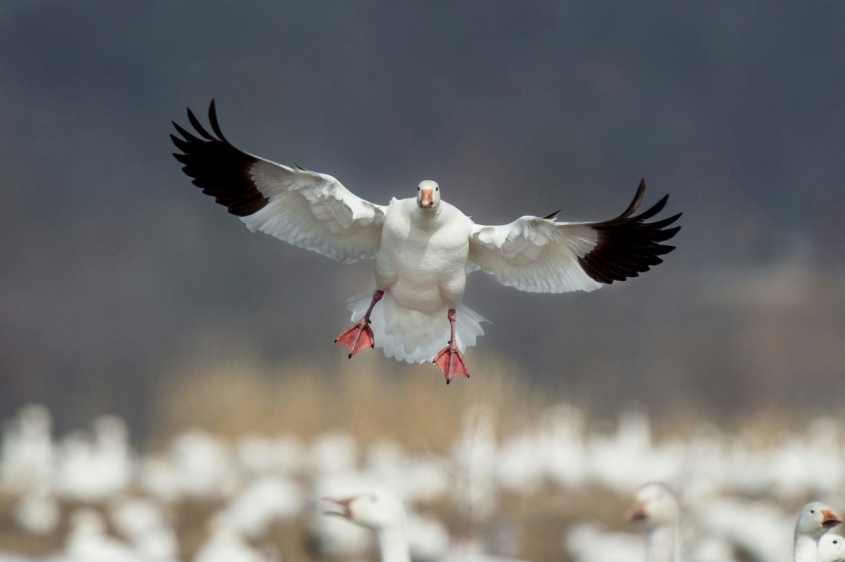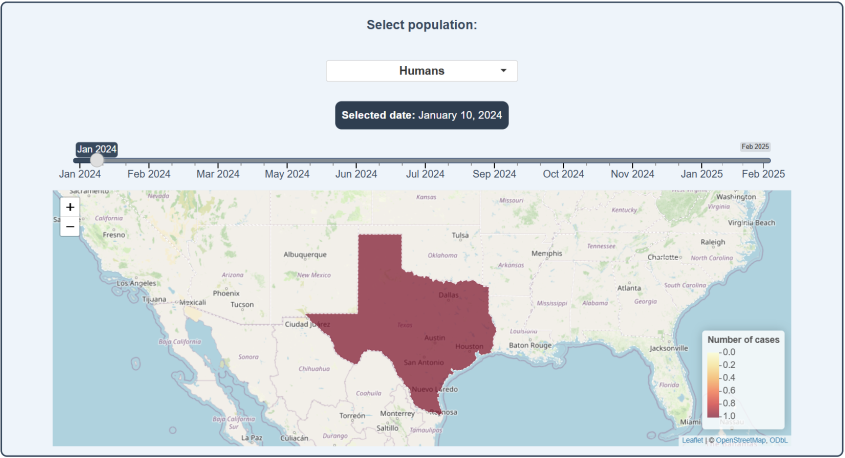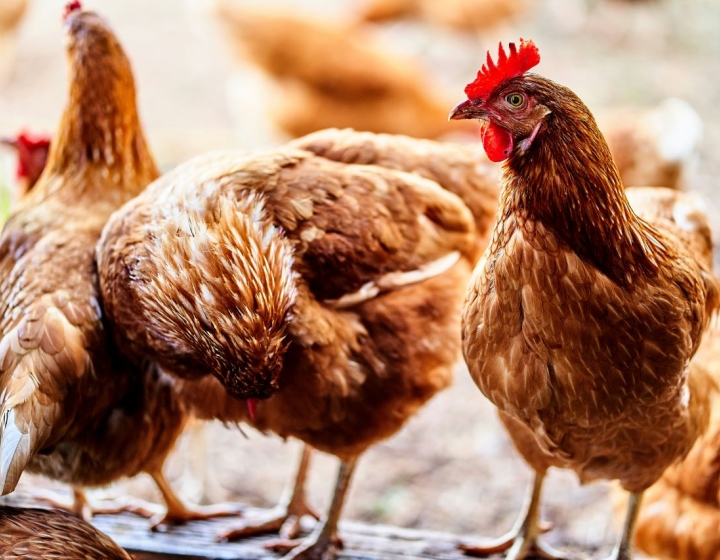Wildlife
What species usually carry avian flu?
Wild birds - especially ducks, geese and gulls - are considered reservoirs for avian influenza viruses. Mild forms of the virus (called low pathogenic, or LPAI) commonly circulate in these species but rarely cause serious disease. More severe forms of avian influenza, (called highly pathogenic, or HPAI) sometimes develop from mutations in LPAI forms.
HPAI outbreaks have caused serious disease in both wild birds and poultry around the world, but generally have only lasted for short periods of time in the United States.
The Cornell Wildlife Health Lab provides more information on avian influenza in wildlife.
What is different about this outbreak?
In 2021, a strain of HPAI called H5N1 was introduced to North America from European wild birds. The first cases detected were in black-backed gulls in Newfoundland, but cases were quickly discovered in wild birds all across the country.
Genetic analysis of the virus over time indicates that this has not been a single outbreak from one introduction, but that newer variants keep getting introduced – a total of 6 so far. While the number of cases ebbs and flows with spring and fall migration of wild birds, this outbreak has gone on to be the longest and largest in history, persisting for over three years.
The Cornell Wildlife Health Lab provides more information on HPAI in New York state.
Which wildlife species have been affected?
The behavior of this H5N1 virus has also been highly unusual compared to previous outbreaks. It causes severe disease in large numbers of wild birds (at least 173 species), including not only waterfowl and raptors, but also crows and songbirds. It has spilled over to a wide number of wild mammal species, including bears, raccoons, red fox, skunks, opossums and rodents.
How do wildlife species transmit the infection to each other?
Raptors and carnivorous mammals tend to get infected from consuming sick prey, while waterfowl that congregate in large flocks in the winter will become exposed from other birds or ingestion of virus shed in water.
What are the symptoms of HPAI in wild birds and can it be treated?
Sick wild birds can have:
Corneal edema (eye swelling)
Respiratory symptoms
Gastrointestinal symptoms
Neurologic signs, including tremors and seizures
The disease can progress rapidly and has caused significant mortality in wild birds. Bald eagles have been particularly hard hit. Treatment is mostly supportive, but there are serious health risks to the people providing care, requiring extensive use of protective equipment and isolation facilities.
What should I do if I find a sick or dead bird?
Avoid handling sick or dead birds and avoid contact with surfaces that have bird feces.
If you find dead birds in New York state, especially multiple species or individuals in one place, please report it to the Department of Environmental Conservation (DEC). The DEC, in partnership with the Cornell Wildlife Health Lab, can order the appropriate lab testing to determine cause of death.
Additionally, keep pets (including pet cats, dogs and birds) away from sick or dead wild birds. If you need to dispose of a dead bird to prevent pets or other people from contacting it, or if you must move a sick bird, use the following precautions:
- Wear gloves, eye protection and a face mask.
- Place dead birds in a double- or triple-bagged garbage bag (using a shovel if possible), and dispose of them in an outdoor trash receptacle.
- Throw away your gloves and face mask after use.
- Wash your hands well with soap and warm water.
Follow additional advice from the NYSDEC on how to handle sick and dead birds.
Are there special precautions for wildlife rehabilitators?
Wildlife rehabilitators should take precautions when accepting sick birds so that they don’t inadvertently introduce HPAI to the rest of their patients. You can download this guidance for rehabilitators provided by the USDA APHIS. Rehabilitators in New York state are also encouraged to contact the Janet L. Swanson Wildlife Hospital at Cornell University for more information.
Do I need to take down my bird feeders?
The Cornell Laboratory of Ornithology has an excellent article on this topic.
The short answer for most people is No, because HPAI is very rare in the species of songbirds that most commonly come to bird feeders.
The exception to this rule is for households that also raise poultry. In those instances, the advice is for those households to take down their feeders to reduce the risk of the poultry becoming infected.
Other wildlife resources
Current national status from the USDA APHIS: Detections of Highly Pathogenic Avian Influenza in Wild Birds
Health and safety guidance for zoos and wildlife facilities from the USDA via PDF download: Protecting Captive Wild Birds From Highly Pathogenic Avian Influenza
Guidance for workers at risk of exposure from the CDC: Information for Workers Exposed to H5N1 Bird Flu. This page includes posters/handouts with instructions on PPE use.
The National Wildlife Health Center's "Wildlife Health Bulletin - Avian Influenza Update" (March 19, 2025).
In depth research
Peacock, T.P., Moncla, L., Dudas, G. et al. The global H5N1 influenza panzootic in mammals. Nature 637, 304–313 (2025).
Yang, Q., Wang, B., Lemey, P. et al. Synchrony of Bird Migration with Global Dispersal of Avian Influenza Reveals Exposed Bird Orders. Nat Commun 15, 1126 (2024).
This page was last updated on Thursday, Mar 20, 2025






